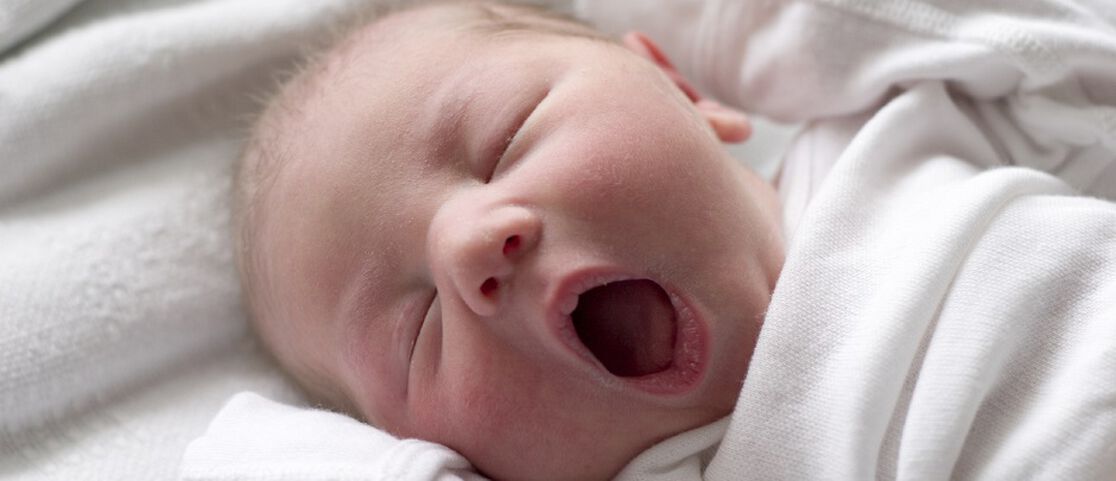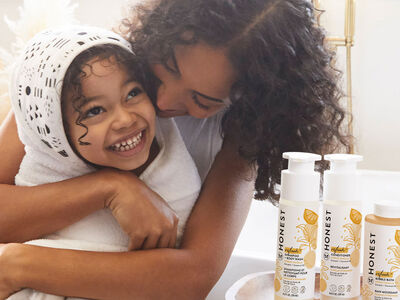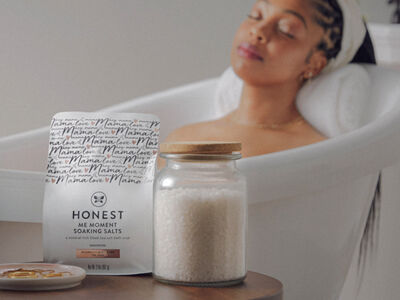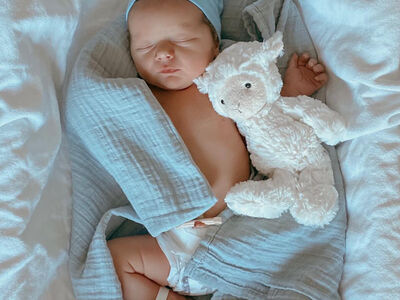One of my biggest life-altering events was the birth of my two boys. If you feel anxiety about being a new parent, you're not alone. Many new parents feel overwhelmed when it's time to bring their new babies home from the hospital. As a nurse in the Children’s Hospital Los Angeles Newborn and Infant Critical Care Unit (NICCU), I am positioned to help give you the confidence in caring for your newborn. Continue reading for helpful newborn care tips!
Getting Started Breastfeeding
Breastfeeding is a team effort between you and your baby. One of the keys to successful breastfeeding is simply sitting up while you breastfeed—sit up in bed, in a comfortable armchair or in a rocking chair. Use pillows behind your back, under your elbow and on your lap to support the baby. Use a footstool to bring your knees up or use pillows under your knees if you are sitting up in bed. You should be relaxed with none of your muscles straining. Your baby should be lying on his side with his whole body facing you and his knees pulled in close to your body. There are a number of breastfeeding pillows to help, but you don’t necessarily need one of those to succeed.
Overcoming a Poor Latch During Breastfeeding
Getting your baby to latch onto your nipple properly helps promote successful breastfeeding. A poor latch (nipple is too shallow in your baby’s mouth) at the breast will cause discomfort and can make your nipples sore or cause them to crack and bleed. Here are some suggestions to help overcome poor latching:
- Get as much help as you can when you are in the hospital after giving birth. Ask for a nurse or lactation consultant.
- Before each feeding, make sure you are comfortable—empty your bladder, get some water for sipping, and take your time getting into position.
- Your baby should be awake and ready to nurse. It helps to unswaddling them and change their diaper.
- Your baby’s mouth needs to be open wide for a proper latch. You can tickle their upper lip with your nipple to get her mouth to open. Once her mouth is open, bring her into your breast.
Curing a Stuffy Nose
Babies are born nose breathers, probably because that how they breathe during breastfeeding—mouth breathing begins later. If your newborn has a stuffy nose, not only does it interfere with breastfeeding but it can cause other respiratory issues. If your baby shows signs of a stuffy nose (e.g. nasal secretion around their nostrils, sneezing) here are some ways to help clear their nasal passage to promote better breathing. One of the most effective ways to remove blockage in their nose is to use a bulb syringe:
- Press on the bulb syringe to remove air. Do not release the bulb yet.
- Place the tip of the bulb syringe into your baby’s nostril.
- Gently release the bulb pressure and allow it to suck up the mucus from your baby’s nose.
- Clean the bulb syringe with hot water and soap. (Make sure the syringe is empty of water for the next time you use it, and that you are not shooting water into your baby’s nose.)
Clipping Nails
Your newborn’s nails grow quickly and will require a trim at least once per week. If you forget, you’ll be reminded by a small scratch on your arm or hand, or they may accidentally scratch themselves.
- Trim your baby’s nails when they are sleeping.
- Before you use nail clipper, try filing your baby’s nails.
- If filing does not work, press down on your baby’s fingertip so you can get the clippers around both sides of the nail.
- If there are sharp edges after clipping, use a nail file to soften and trim them down.
Safe Sleep for Your Newborn
Since 1992, the American Academy of Pediatrics (AAP) recommends that infants sleep on their backs to reduce the risk of sudden infant death syndrome (SIDS). SIDS is the sudden and unexplained death of a baby under 1 year of age. Even though there is no way to know which babies might die of SIDS, there are some things that you can do to make your baby safer:
- Always place your baby on their back to sleep, even for naps.
- Place your baby on a firm mattress.
- Remove soft, fluffy and loose bedding, including blankets, crib bumpers, and stuffed toys from your baby's sleep area.
- Do not use a sleep positioner to hold your baby on their back or side.
- Use a sleep sack rather than blankets while your baby is sleeping.
- Your baby's room should be at a temperature that is comfortable for an adult. Too many layers of clothing or blankets can overheat your baby.
By Robert Giesler, BSN, RN, CPST, Pediatric Nurse, Newborn and Infant Critical Care Unit (NICCU) at Children’s Hospital Los Angeles
We aim to provide you with the most honest and credible information possible. This article was reviewed for accuracy by The Honest Team and was written based on trusted sources that are linked at the bottom of the article.
blog_review_statement




